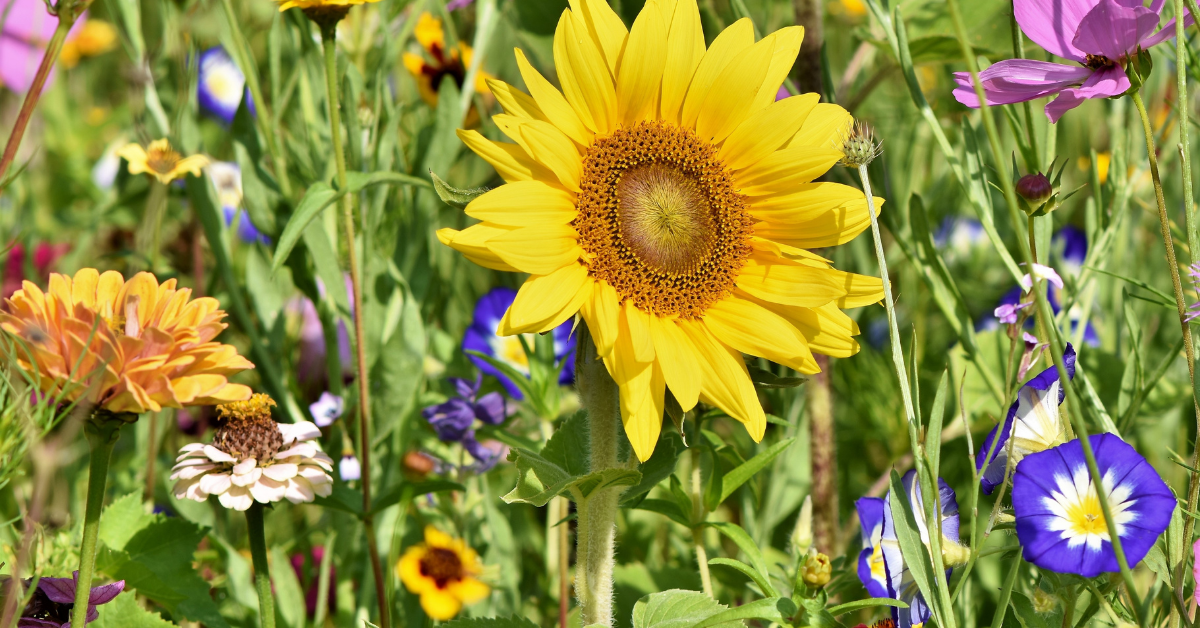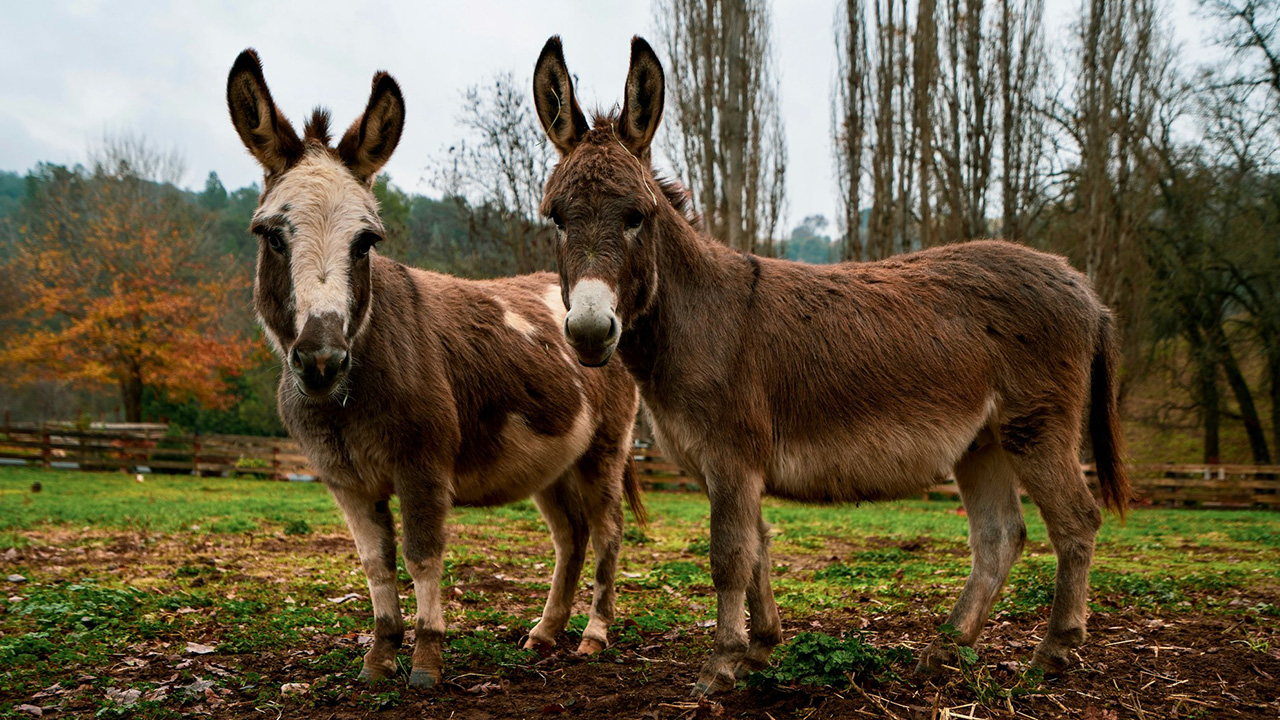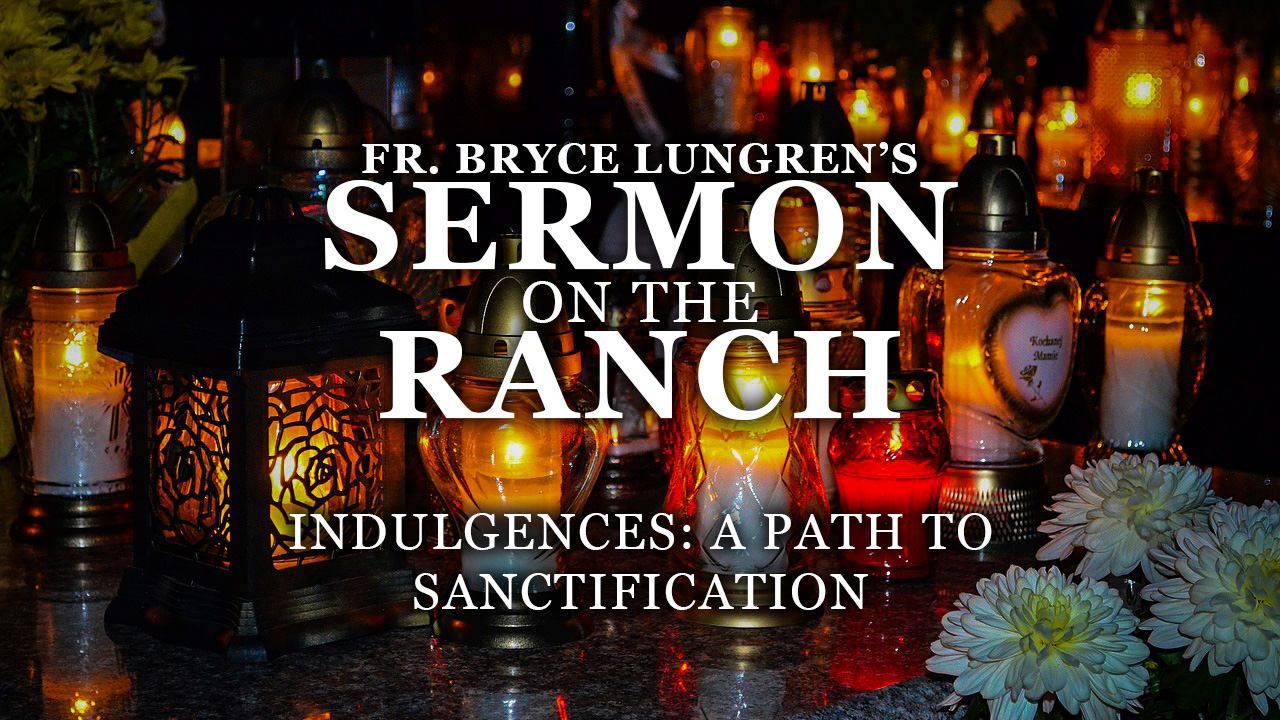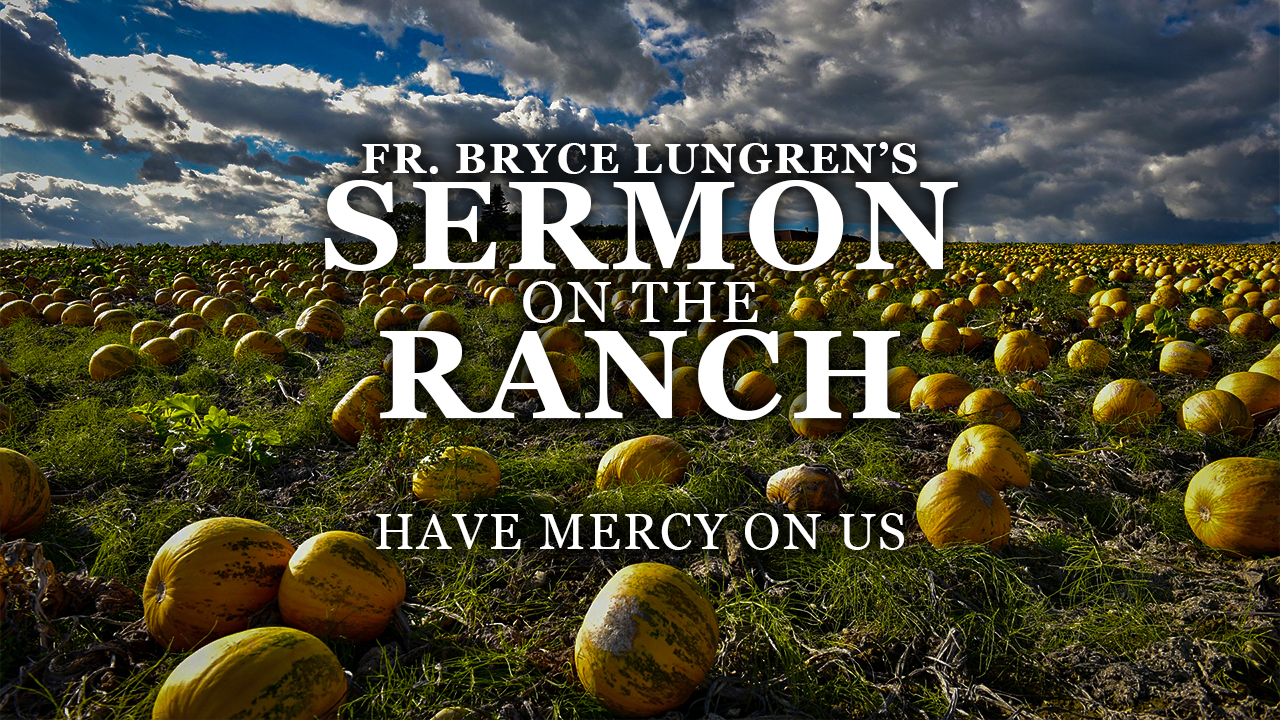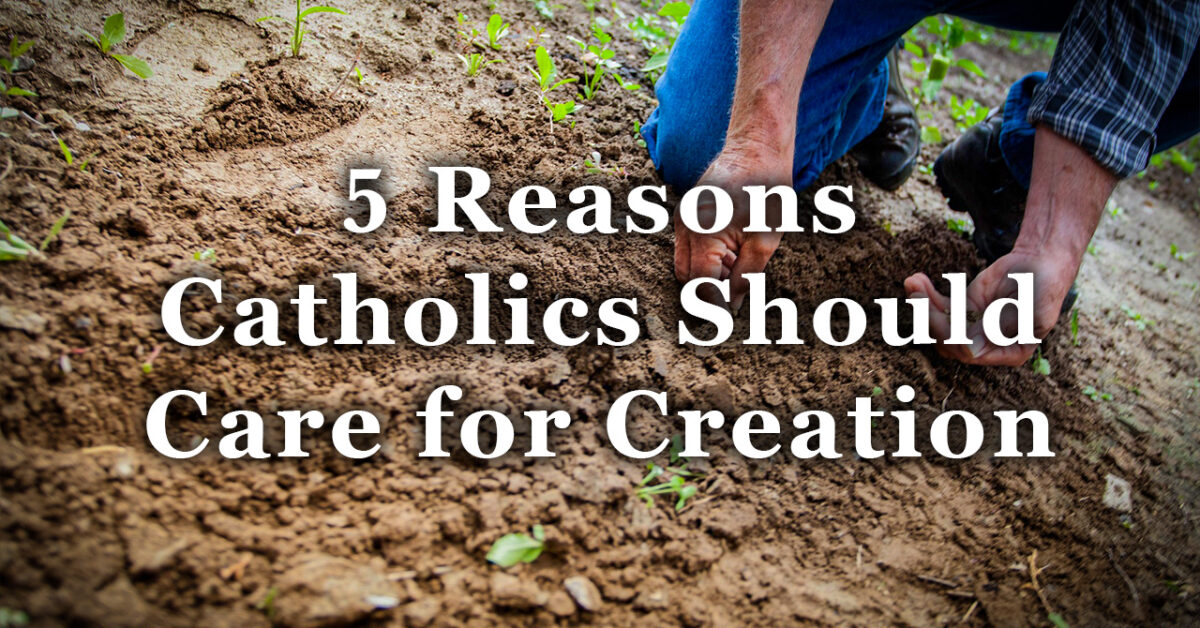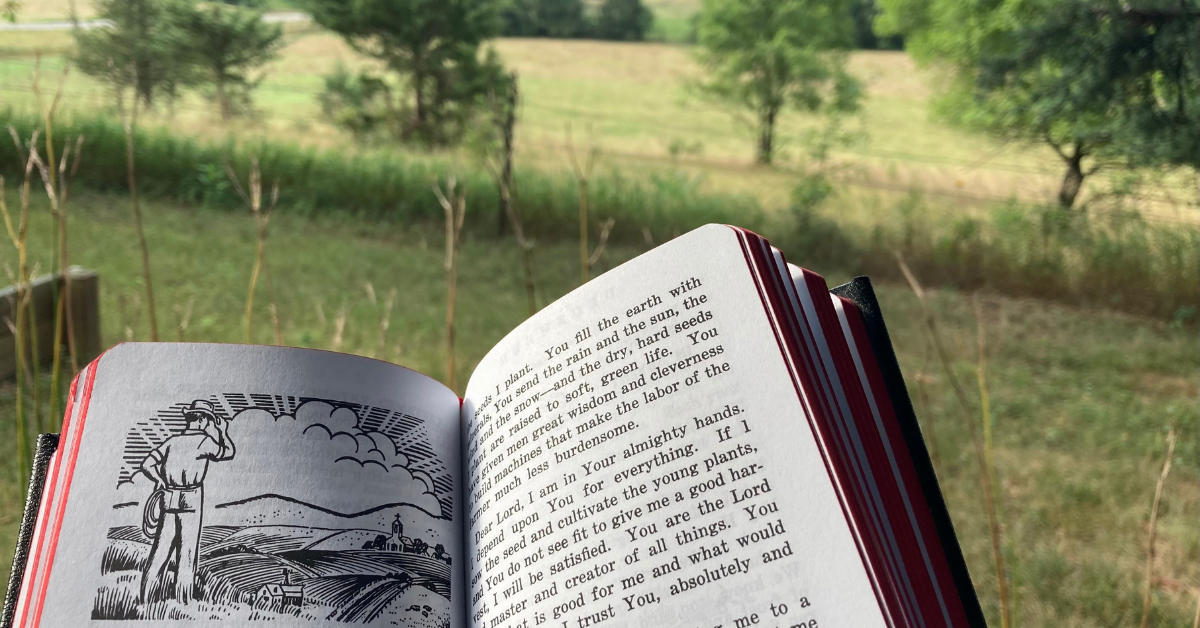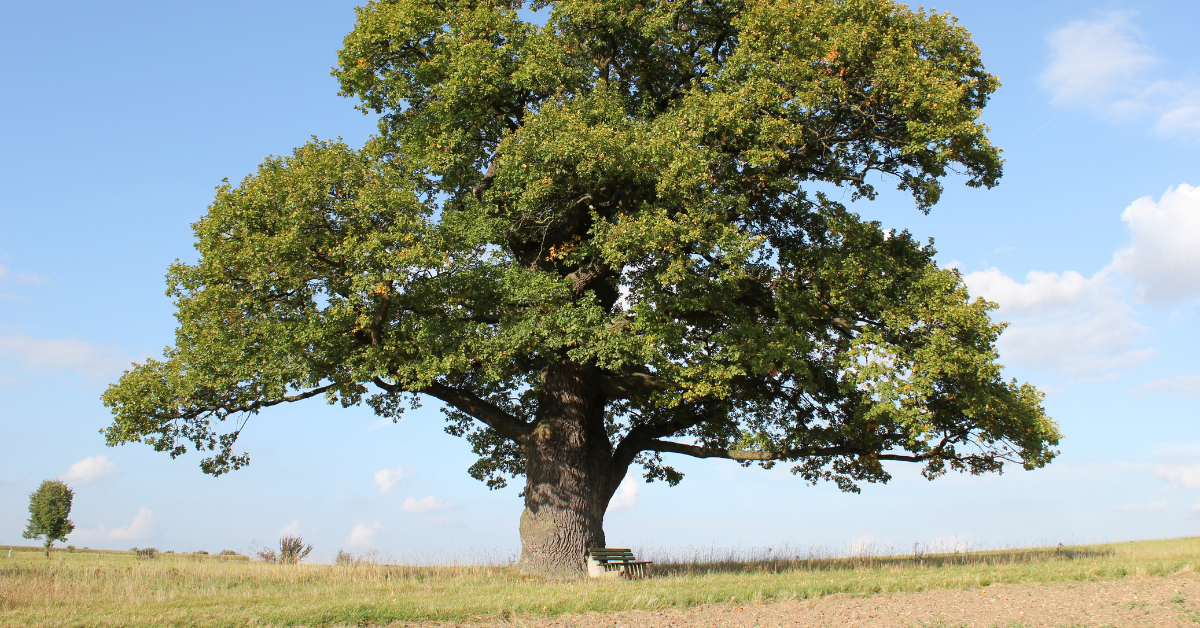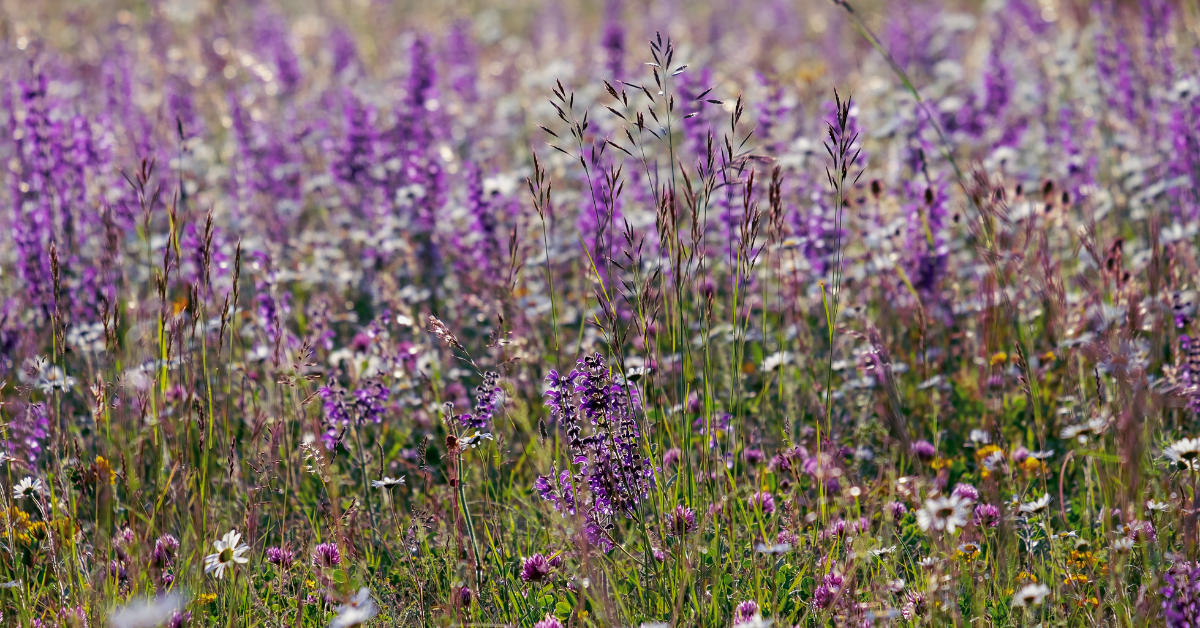Adam, we may logically assume, when he named all of God’s creatures, gave them names which lifted heart and mind sacramentally to their Creator. Then came the Tower of Babel and the confusion of tongues and these pure names were lost.
Catholic England, at least, moved back in the direction of sacramental flower names honoring the Mother of God. Honeysuckle then was Our Lady’s Fingers; primrose, Our Lady’s Keys; bleeding heart, Mary’s Heart. Some were named for the feast on which they might be expected to bloom: Purification Flower, Assumption Lily. The Madonna Lily was the emblem of the Virgin-the golden anthers signifying the beauty of her soul and the white petals her pure body.
Then the so-called Reformation banished these sacramental names and replaced them with gems like skunk cabbage and stinkwort. Mary’s Gold almost survived as marigold.
Today’s quickening movement to restore Marian names is more than a pretty gesture in honor of Our Lady. A Mary Garden for the farm, suburban or small-town yard (or even a Marian flowerpot in an apartment) will help the gardener to lift mind and heart to God, and to give sacramental, eternal significance to his or her daily work whether it be killing weeds, washing milk pails or building bombers. But first we need some background.
In 1950 two Philadelphians-middle aged Edward McTague, a business executive and consultant and professor of economics, and young John Stokes Jr., a machinery firm executive, obeyed the Holy Father’s behest to visit Marian shrines and to rededicate their lives to our Blessed Mother. At Woods Hole, Mass., they saw a Mary Garden shrine planted by Mrs. Frank Lille, a convert. She had included a bell tower that rings the Angelus.
So profoundly impressed with the idea of a Mary Garden were the two pilgrims that they made the spread of Mary Gardens their personal apostolate to restore honor to Mary through her flowers and to make gardening something more than a gymnastic exercise of ostentation of one’s chartreuse thumb. They searched out hundreds more Mary names for flowers.
In 1951 McTague and Stokes made a 10-variety “Our Lady’s Garden” seed packet available to the public. For years they were the sole source of information and seeds for Mary flowers; now garden centers are jumping aboard their bandwagon. “Crown the beauty of any garden…with flowers named to honor Mary…make gardening a prayerful work,” exhorts an ad.
“The starting place,” points out lean, graying McTague, “is St. Isidore’s devotion to Our Lady of Atocha (Our Lady of the Fields).” He refers to us an article in OUR LADY’S DIGEST (Aug-Sept. ’58):
“…She is Our Lady of the people, beloved of St. Isidore the Farmer. In spite of the royal trappings that surround her, she remembers the brawny men who laid their scythes at the door while they knelt to ask her for a good day in the fields, and the women who prayed her to keep the baby out of trouble while they got in the harvest. Not only the swords of the mighty have been laid at her feet, but the tools of the farmer and artisan, things which a maid from Nazareth would recognize as the tools of her Son and husband. It is St. Isidore who best brings this to our minds.”
“It is Our Lady of Atocha to whom St. Isidore addressed his needs…He used to stop at her shrine for his meditation on the way to work.”
McTague and Stokes devoted their first five years to re-discovering long-forgotten Mary flower names and traditions, to publicizing the Mary Garden idea, and to horticultural research. A complete list of the Mary flower names they discovered would take, in small print, some 8 or 10 pages in this magazine.
Since 1956, relates Stokes, their time has been “devoted to re-thinking and developing the religious intentions and mediations of our work.” In the early period a close affinity in feeling and purpose grew up between Mary’s Gardens and CRL.
“We must say it is gratifying to note the number of articles which have appeared in CATHOLIC RURAL LIFE in the last couple of years suggesting that people raise their hearts and minds in prayer as they do their farm work (we recall a fine article recently by a farmer who prays while driving his tractor). We believe that prayer rising formally from nature and gardening and farming to God and Our Lady is the heart and the ‘better part’ of the whole rural life apostolate. Rural life needs both Mary and Martha.”
Mary’s Gardens has no lack of critics who suggest that its advocates are fanatical or insane in suggesting that people should undertake their work for religious motives and should recollect their thoughts and meditate as they work. The McTague-Stokes position remains that this should be the normal way for a Christian to operate, in accord with St. Paul’s exhortations that we should ‘pray always’. They point out that this very technique of meditation and work and relating work to their philosophy of life is the method so successfully used by the communists to make zealots for the world revolution of them.
– Catholic Rural Life Magazine, August 1961 [Read Part 2 here.]
Editor’s Note: This article is a part of our “From the Archives” series. The series highlights articles, stories or news snippets from the CRL archives that are still relevant, fun or thought provoking for us today.
